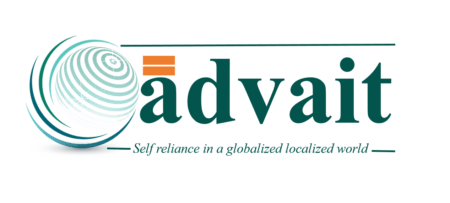a. introduction (summary and key points)
This section is titled Suggestions on SPV Framework. SPV means Special Purpose Vehicle. And, this SPV is being crafted as an instrument for Hunar Haat Emporium whose key objective will be running and maintaining in business approximately five stores with the option to increase capacity offline/online going forward.
While the deliberations will be focused on structuring the SPV with relevant empirical evidence in particular TRIBES India and/or TRIFED; the write up will also focus on Indian learnings in terms of Public Private Partnerships in particular Financial Gradients.
The three essential takeaways from this section will be learnings from the TRIFED model, exploring Financial Gradients as a concept and finally suggestions on the SPV framework for Hunar Haat.with respect to the key objective.
The section recommends that Hunar Haat can be conceptualised as a Section 8 company, or, a Society; (in certain circumstances even a normal company) however the objects of Hunar Haat have to be well defined and its share capital has to be authorised with multiple stakeholders in mind. The object of the SPV has to include stakeholder empowerment, environmental sustainability, financial viability (including generation of surplus) and should provide stewardship in governance. Given the nature of the business of Hunar Haat, the SPV is well in place to act out as a model case of ESG in the realm of Financial Economics. Environmental, Social, and Corporate Governance (ESG) refers to the three central factors in measuring the sustainability and societal impact of an investment in a company or business.
What is a Special Purpose Vehicle (SPV) in India?
(Sourced from – https://www.rbi.org.in/Scripts/PublicationReportDetails.aspx?ID=164#:~:text=An%20SPV%20must%20be%20capable,of%20instruments%20issued%20by%20SPV. )
Securitisation offers higher quality assets to investors by virtue of the fact that the structures insulate investors from the bankruptcy risk of the Originator. In order to ensure that the assets actually achieve bankruptcy remoteness, it is essential to move them out of the balance sheet of the Originator and park them with another independent entity. Typically an SPV is employed to purchase the assets from the Originator and issue securities against these assets. Such a structure provides comfort to the investors that they are investing in a pool of assets which is held on their behalf only by the SPV and which is not subject to any subsequent deterioration in the credit quality of the Originator. The SPV is usually a thinly capitalised vehicle whose ownership and management are independent of the Originator. The main objective of SPV is to distinguish the instrument from the Originator.
What is Financial Gradients?
Financial Gradients is the theory of structuring Special Purpose Vehicles which have elements of Investment grade finance (eg. Equity) and Grants (eg. Public Finance)
The method of Financial Gradients is the understanding of the nature and sources of finance. Inherently, a financial commitment is made for a particular purpose, also the mix of finance in a particular project can guide the results or outcomes, particularly at the institutional level
b. relevant empirical examples (Tribes India, Fabindia, Jharcraft)
– mainly TRIBES India, Fabindia in terms of implementation
TRIBES India case
Sourced from: https://trifed.tribal.gov.in/about-us-2
TRIFED was established in August 1987 under the Multi-State Cooperative Societies Act, 1984 by the Government of India as a National level Cooperative body. Under the administrative control of the then Ministry of Welfare of India, TRIFED is mandated to:
- bring about socio-economic development of tribals of the country by institutionalising :
- trade of Minor Forest Produce (MFP)
- Surplus Agricultural Produce (SAP) collected/ cultivated by them.
- TRIFED plays the dual role of both a market developer and a service provider, empowering them with knowledge and tools to better their operations in a systematic, scientific manner and also assist them in developing their marketing approach.
- TRIFED is involved actively in capacity building of the tribal people through sensitisation and the formation of Self Help Groups (SHGs).
- TRIFED is engaged in training the tribals in several activities, so that they can effectively carry them out.
- The organisation also assists them in exploring and creating opportunities to market the developed products in national and international markets on a sustainable basis.
- TRIBES India is the “brand” under which the sourced handcrafted products from the tribal people are sold
- There are 120 brick-and-mortar TRIBES India outlets across the country, making it a sustainable and reliable brand.
- Tribes India also has an online Shopping Portal: https://www.tribesindia.com/
Summative annotation About Tribes India
Sourced from: https://vikaspedia.in/social-welfare/scheduled-tribes-welfare/tribes-india
The Tribal Cooperative Marketing Development Federation of India, (TRIFED), under the Ministry of Tribal Affairs, is engaged in marketing development of tribal products including art and craft items. TRIFED has been marketing tribal products through its own shops called “TRIBES India” and through the outlets of the state emporia on consignment basis.
TRIFED has developed a system of sourcing products of art and craft made by empanelled tribal suppliers. The suppliers comprise of individual tribal artisans, tribal SHGs, Organisations/ Agencies/NGOs working with tribals, who are empanelled as suppliers of TRIFED as per the guidelines for empanelment of suppliers. The products procured by TRIFED are then sold through its marketing platform of “Tribes India”.
c. defining the entity and its objects (Hunar Haat Emporia)
will be primarily based on the review of TRIBES India, and theories from New Institutional Economics
i. key object – securing livelihoods of increasing number of crafts people
ii. financial viability
iii. long term viability
iv. environmental and social positive feedback
v. possibility for expansion in terms of stores or platforms
d. key issues to consider (relevant concepts and theories for SPV decision making)
i. the space for PPP (Public Private Partnerships)
Table SPV 1.1: the space for PPP
| High | Low | |
| Public Value | Public Value | |
| Profitable | PPP | Private Finance |
| Non profitable | Public Finance | — |
ii. Financial Gradients
(sourced or adapted from Arnab Bose, Financial Gradients published materials)
Table SPV 1.2 a Financial Gradients
| Category | Definition | Known For |
| Pure Grant | Funds given as a part of philanthropic activity (tax benefits possible) | Philanthropy |
| Research Grant | Funds given as a part of research activity (can also be seed financing) | Innovation |
| Public Finance | Government funds with fiscal objectives | Social Dividend |
| Debt | Funds from typically commercial (or even multilateral) banks | Continuity |
| Equity | Shareholder contribution with expectation of returns | Efficiency |
Table SPV 1.2 b Financial Gradients, Attributes
| Category | Known For | Accountability | Monitoring cost | Perversity | Motivation |
| Pure Grant | Philanthropy | Lowest | Highest | possible | high |
| Research Grant | Innovation | Moderate | High | rare | high |
| Public Finance | Social Dividend | Moderate | High | possible | low |
| Debt | Continuity | High | Low | rare | low |
| Equity | Efficiency | Highest | Lowest | high | high |
Financial Gradients can be summarised as in the table on Financial Gradients. From the table on the space for PPP; if the intervention or the argument for the SPV is for a PPP, then Financial Gradients will ask that in the objects of the SPV, all the categories of finance be allowed in some way. This will ensure continuity, efficiency, innovation and better risk management.
SPVs with non negative feedback will have elements of :
Equity
Debt
Public Finance
Research Grants
Grants
iii. Risk Management
Table SPV 1.2 c Financial Gradients, Risk Management
| Category | Known For | Risk Managed | Key Stakeholder |
| Pure Grant | Philanthropy | Systemic | Multiple |
| Research Grant | Innovation | Systemic | Academia |
| Public Finance | Social Dividend | Systematic | Government |
| Debt | Continuity | Unsystematic | Financial Institutions |
| Equity | Efficiency | Unsystematic | Entrepreneurs |
Diverse inclusion in types of share capital (Equity to Grants) are a better method to manage risks making the SPV :
- long term
- environmentally sustainable
- socially acceptable
- better work availability
Risks managed are –
Systemic (eg. Financial crisis, 2008)
Systematic (eg. Pandemics, Covid)
Unsystematic (eg. competition)
and also in the KuU framework (K – knowable, u- unknown, U – Unknowable)
| Category | Source | Private |
| Government | Companies | |
| Pure Grant | substantial | possible |
| Research Grant | substantial | possible |
| Public Finance | substantial | no |
| Debt | possible | possible |
| Equity | possible | substantial |
e. Suggestions
recap of key suggestion with respect to object and finance of share capital
Society
Section 8 Company
normal Company
f. Conclusion
====================
Important
NMDFC: stress on corporate governance and a tacit understanding of geerating surplus









